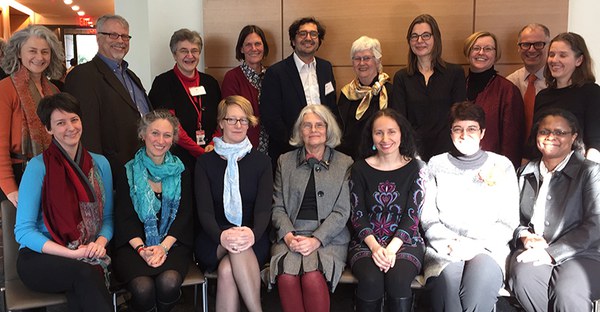On March 26 and 27, a group of fifteen specialists gathered to discuss Byzantine and early Islamic textiles at the Dumbarton Oaks Museum conference “Liminal Fabric: Furnishing Textiles in Byzantium and Early Islam,” organized in conjunction with the Dumbarton Oaks Byzantine Collection’s catalogue raisonné project. Almost eighty participants from local and national universities and museums gathered for talks in the Oak Room of the Fellowship House. They included art historians, archaeologists, conservators, curators, and historians, and they discussed the theme of furnishing textiles, a topic largely neglected in scholarly literature. Papers addressed theoretical and practical approaches for understanding textiles in context, including questions of production, design, and consumption, and the uses of furnishing textiles in a range of environments. The conference opened with an introduction by Gudrun Buehl, followed by reports and case studies by the project’s core team members, including Jennifer Ball, Kathrin Colburn, Helen Evans, Eunice Maguire, Brandie Ratliff, Sabine Schrenk, Thelma Thomas, and Betsy Williams. Presentations by Elizabeth Bolman, Maria Evangelatou, Kostis Kourelis, Maria Parani, Avinoam Shalem, and Lioba Theis explored questions of design, meaning, and context, and expanded the framework to include representations of textiles in art and architecture, textual sources describing interiors, and archaeological evidence for the production and consumption of textiles.
In addition to presenting their most recent research, the textile project’s core group of collaborators were welcomed to the Textile Museum’s recently opened storage facilities for a workshop organized by Senior Curator Sumru Belger Krody and supported by Director John Wetenhall. The collaborators also convened at a business meeting led by Lain Wilson, who shared information about the project’s digital catalog. The scholars were particularly interested in discussions about best practices for digital publications, most notably questions of peer-reviewing, editing, and expanded publication features possible only in the digital medium.

